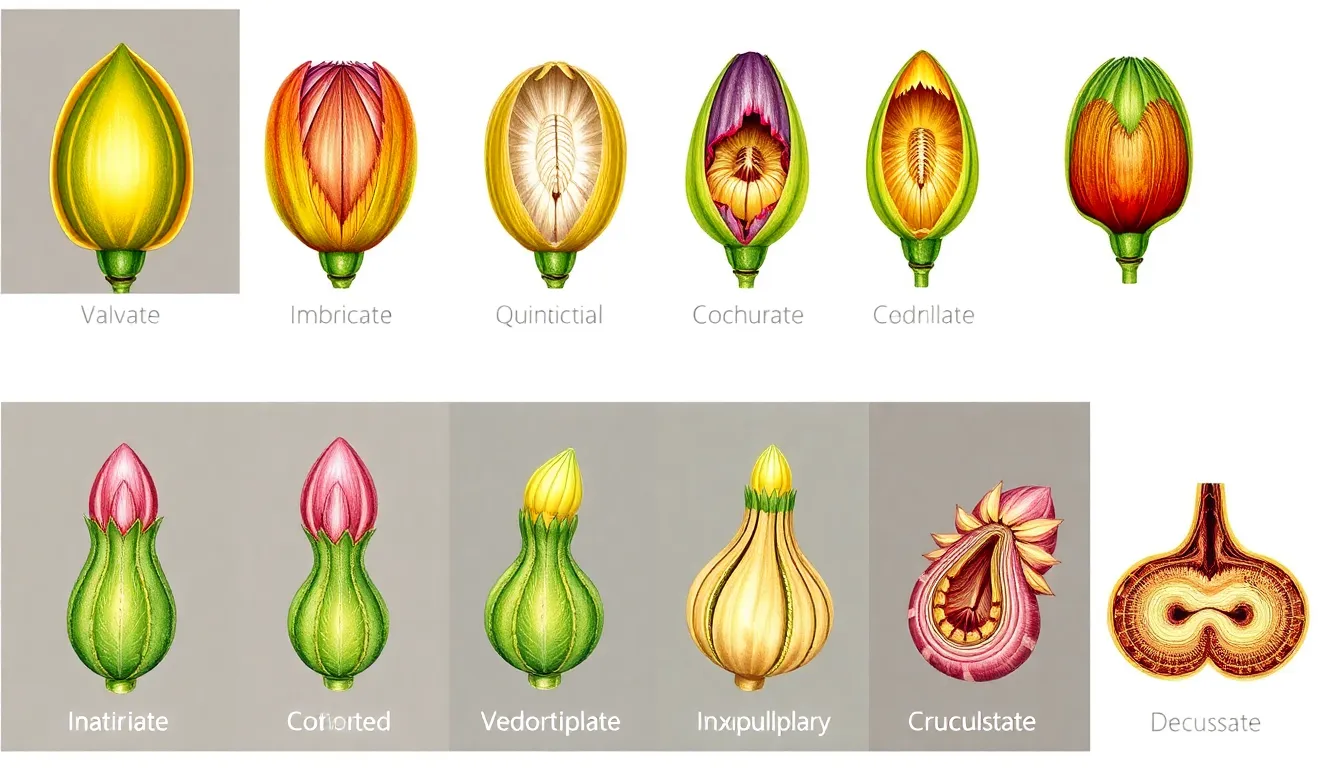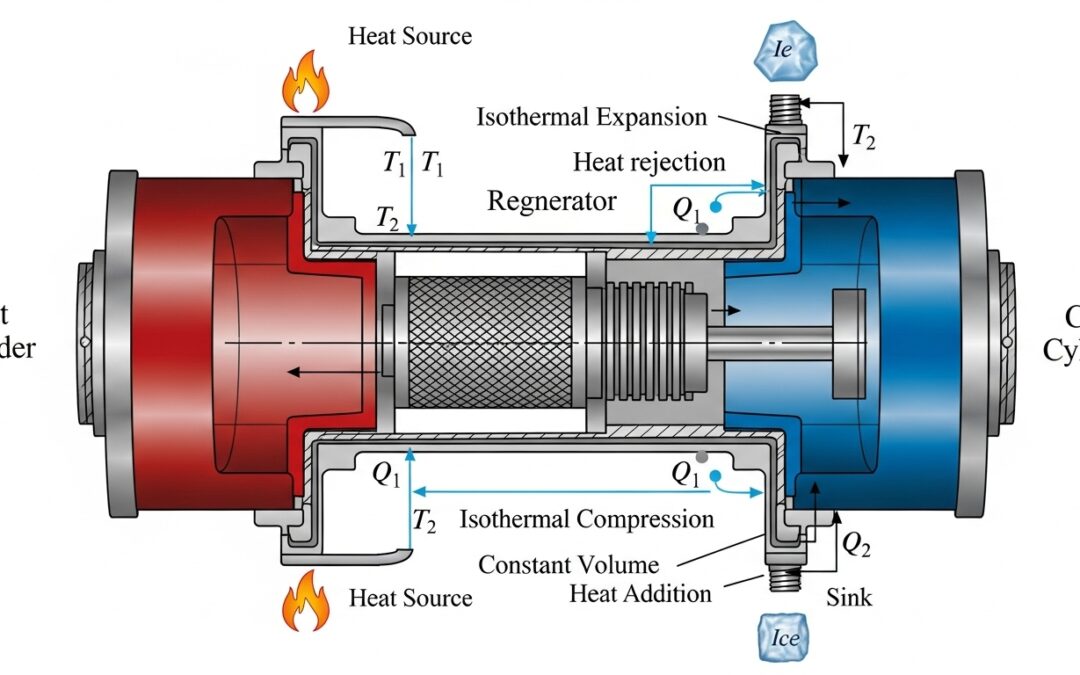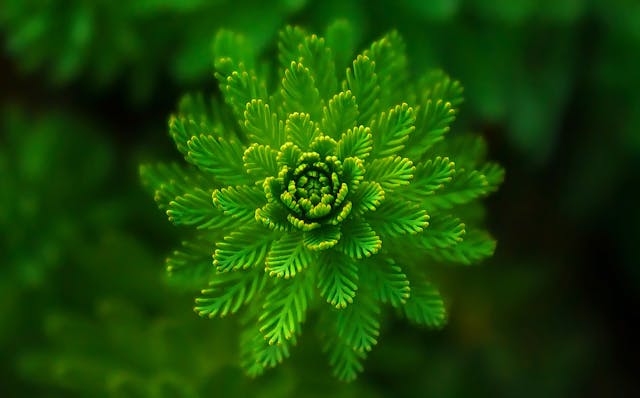aestivation in flowers guides our eye to how floral parts fold and meet within buds before blooming, a subtle but essential taxonomic clue. In this discussion we explore representative patterns—from valvate to quincuncial—showing how margins trace evolutionary history and aid field identification, classroom teaching, and botanical research alike.
Table of Contents
- Aestivation in flowers: Valvate
- Aestivation in flowers: Imbricate
- Aestivation in flowers: Crumpled
- Aestivation in flowers: Decussate
- Aestivation in flowers: Contorted or twisted
- Aestivation in flowers: Cochleate
- Aestivation in flowers: Contortiplicate
- Aestivation in flowers: Quincuncial
- Aestivation in flowers: Induplicate
- Aestivation in flowers: Final Solution and Takeaways
Read More
aestivation in flowers guides our eye to how floral parts fold and meet within buds before blooming, a subtle but essential taxonomic clue. In this discussion we explore representative patterns—from valvate to quincuncial—showing how margins trace evolutionary history and aid field identification, classroom teaching, and botanical research alike.
Aestivation in flowers: Valvate
Valvate aestivation describes margins of petals or sepals that touch at the edges without overlapping. In buds, this neat edge-to-edge arrangement creates a protective seal as petals prepare to unfold, minimizing early desiccation and preserving the precise floral architecture essential for subsequent pollination and speciation signals.
Taxonomists note valvate buds in several families; Malvaceae is a classic example where sepals meet snugly at the tips. Variations occur, and occasional misplacements arise when development deviates. Recognizing this pattern in field notes sharpens species identification and reveals underlying developmental strategies guiding bud opening.
Aestivation in flowers: Imbricate
Imbricate aestivation features margins that overlap in sequence, so petals or sepals lie partially atop one another in the bud. This pattern often yields a compact, shielded bud and can create a layered silhouette that remains hidden until the flower finally emerges, contributing to protective camouflage during maturation.
Imbricate arrangements show diversity across taxa, with varying degrees of overlap. In practice, observers assess which part lies nearest the outside and which hides beneath, providing a practical key for distinguishing related genera and understanding how overlapping margins influence bud protection and maturation.
Aestivation in flowers: Crumpled
Crumpled aestivation describes petals or sepals that appear irregularly folded, giving a wrinkled bud surface. This pattern can arise from rapid growth or environmental stress, yet it remains a recognizable feature when observed under modest magnification, offering clues about the bud’s developmental tempo.
In practice, crumpled aestivation is often a transient state; subsequent unfolding reveals a more regular arrangement. Observers note this pattern as a diagnostic cue and consider it alongside leaf vernation data to avoid conflating bud and leaf development in taxonomic notes.
Aestivation in flowers: Decussate
Decussate aestivation involves alternating opposite floral parts along the axis, creating a crisscross pattern as each part counterbalances its neighbor. This geometry can stabilize the bud and guide orderly opening, a feature sometimes correlated with pollination strategies and spatial packing in dense inflorescences.
Decussate patterns help taxonomists distinguish closely related taxa where axis orientation differs subtly. Field notes often accompany decussate observations with measurements of angle and alignment, reinforcing the link between bud architecture and evolutionary lineage across angiosperms.
Aestivation in flowers: Contorted or twisted
Contorted or twisted aestivation means every petal or sepal sits outside its neighbor on one margin and inside on the other, producing a dramatic, spiraling or skewed presentation within the bud. This striking arrangement can influence how the corolla unfurls and how floral symmetry is perceived.
Examples include contorted patterns observed in Phlox paniculata and Vinca minor, where margins twist into unique silhouettes. Recognizing contorted aestivation expands the taxonomic toolkit and emphasizes how margins encode developmental constraints and aesthetic diversity in flowers.
Aestivation in flowers: Cochleate
Cochleate aestivation describes margins that are spirally twisted, giving the bud a coiled appearance. This form can defer full opening, regulate petal exposure, and create a distinctive surface texture that botanists use as a diagnostic feature in field identifications and taxonomic keys.
Spirally twisted buds are especially recognizable in some climbers and tropical taxa, where the cochleate pattern interacts with growth rate and environmental cues. Documenting such spirals aids comparative morphology and phylogenetic studies across lineages sharing spiral tendencies.
Aestivation in flowers: Contortiplicate
Contortiplicate combines contortion with plicate folding, so margins are both twisted and folded inward or outward. This dual condition yields a highly sculpted bud interior, often creating chambers or ridges that influence how petals align during early bud development and subsequent flower symmetry.
In Merremia tuberosa, the corolla in the bud has been described as contortiplicate, illustrating how a single pattern can appear in diverse lineages. Documenting contortiplicate aestivation enhances morphological datasets and supports nuanced discrimination among related genera.
Aestivation in flowers: Quincuncial
Quincuncial aestivation features five parts where two petals or sepals lie outside all others, two are inside all others, and the fifth is outside on one margin and inside on the other. This highly structured arrangement yields a distinctive five-part bud profile useful for taxonomy and elegant floral assays.
The vexillary type, common in peas, represents a specialized variant where a large standard encloses two smaller petals. Recognizing quincuncial patterns supports accurate genus placement and highlights the geometric precision underlying floral development.
Aestivation in flowers: Induplicate
Induplicate aestivation describes petals or sepals folded inward, creating compact inward margins that shelter the inner floral organs during bud development. This inward folding can influence how light penetrates the bud and how soon the corolla reaches a fully exposed stance at opening.
Induplicate patterns appear across several taxa and benefit from careful documentation in herbarium notes. Recognizing inward folding helps distinguish subtle taxa differences and supports broader comparative studies of bud architecture and developmental timing.
Aestivation in flowers: Final Solution and Takeaways
The study of aestivation in flowers reveals a spectrum of bud arrangements that encode evolutionary history, developmental constraints, and taxonomic signals. By cataloging patterns—from valvate to vexillary—we gain a practical framework for field identification and educated hypotheses about floral function and adaptation.
In sum, understanding aestivation in flowers equips researchers with a descriptive vocabulary that strengthens biodiversity inventories and classroom teaching. Observers should pair bud morphology with leaf vernation to avoid misclassification, and always note ecological context to illuminate how form relates to function across angiosperms.
| Aestivation Type | Key Trait |
|---|---|
| Valvate | Margins touch without overlap |
| Imbricate | Overlapping margins in sequence |
| Crumpled | Irregular folded, wrinkled bud surface |
| Decussate | Alternating opposite parts along axis |
| Contorted / Twisted | Margins outside on one side, inside on the other |
| Cochleate | Spirally twisted margins |
| Contortiplicate | Contorted and folded (plicate) |
| Quincuncial | Five-part with two outside, two inside, one variable |
| Induplicate | Folded inwards |
| Vexillary | Standard petal encloses others (pea-like) |
We also Published
RESOURCES
- Aestivation (botany) – Wikipedia
- Types of Aestivation
- aestivation | Deborah Silver & Co.
- Aestivation in Plant: Definition, Types, Examples – GeeksforGeeks
- Trying to find the term for analysis of morphology in cross-sections of …
- FURTHER OBSERVATIONS ON AESTIVATION IN RANUNCULUS …
- Define aestivation in plants. – Types & Examples | CK-12 Foundation
- AESTIVATION IN RANUNCULUS REPENS L. – CUNNELL – 1958 …
- Aestivation – an overview | ScienceDirect Topics
- A Grammatical Dictionary of Botanical Latin







0 Comments